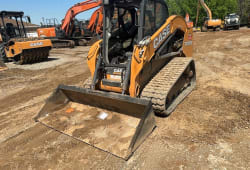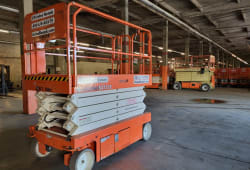Understanding the Scope of Work in Construction
3 Min read
)
March 10, 2025
The scope of work is a crucial document in construction projects, outlining tasks, responsibilities, and expectations for all parties involved. Whether you are a contractor, project manager, or property owner, a clear scope of work in construction ensures efficiency, accountability, and successful project completion.
What Is the Scope of Work in Construction?
The scope of work (SOW) is a detailed description of the work required for a project. It defines the roles, tasks, and deliverables, ensuring all stakeholders understand what needs to be done. A well-written construction scope of work prevents disputes, keeps projects on track, and provides a clear roadmap for contractors and subcontractors.
Why Is a Clear Scope of Work Important?
A well-defined scope of work in construction is essential for:
Avoiding Miscommunication - Ensures that contractors, clients, and project managers are on the same page.
Managing Costs and Budgeting - Helps prevent unexpected expenses and cost overruns.
Ensuring Quality Control - Sets clear expectations for materials, workmanship, and standards.
Legal Protection - Reduces the risk of disputes and contractual issues.
Key Components of a Construction Scope of Work
:format(webp))
An effective construction scope of work should include:
Project Overview - A brief summary of the project, including location, timeline, and objectives.
Work Description - A detailed breakdown of tasks, materials, and specifications.
Roles and Responsibilities - Clarifies who is responsible for each task.
Deliverables - Defines what the contractor must provide (e.g., blueprints, permits, inspections).
Project Timeline - Establishes deadlines for milestones and completion.
Materials and Equipment - Lists the required materials, brands, and quality standards.
Payment Terms - Outlines pricing, payment schedule, and conditions for additional costs.
Compliance and Safety Includes legal, environmental, and safety regulations.
List of Scope of Work for Construction
A list of scope of work for construction varies by project type, but typically includes:
1. Site Preparation and Demolition
Land clearing and grading
Demolition of existing structures
Excavation and soil testing
2. Foundation and Structural Work
Concrete pouring and reinforcement
Steel or wood framing
Waterproofing and drainage installation
3. Mechanical, Electrical, and Plumbing (MEP) Work
HVAC system installation
Electrical wiring and panels
Plumbing systems and fixtures
4. Interior and Exterior Finishes
Drywall, painting, and flooring
Roofing, windows, and siding
Landscaping and exterior structures
5. Final Inspections and Handover
Quality control checks
Final walkthrough and client approval
Documentation and warranty agreements
How to Write an Effective Construction Scope of Work
Be Specific - Avoid vague descriptions; clearly define materials, dimensions, and techniques.
Use Visuals - Include drawings, diagrams, or photos to illustrate tasks.
Set Clear Deadlines - Define key project milestones and completion dates.
Consult Experts - Work with architects, engineers, and contractors to ensure accuracy.
Conclusion
A detailed scope of work in construction is essential for project success. By outlining expectations, responsibilities, and deliverables, it ensures smooth operations, cost control, and high-quality results. Whether you’re a contractor, property owner, or project manager, investing time in drafting a precise list of scope of work for construction can save time, money, and effort.







